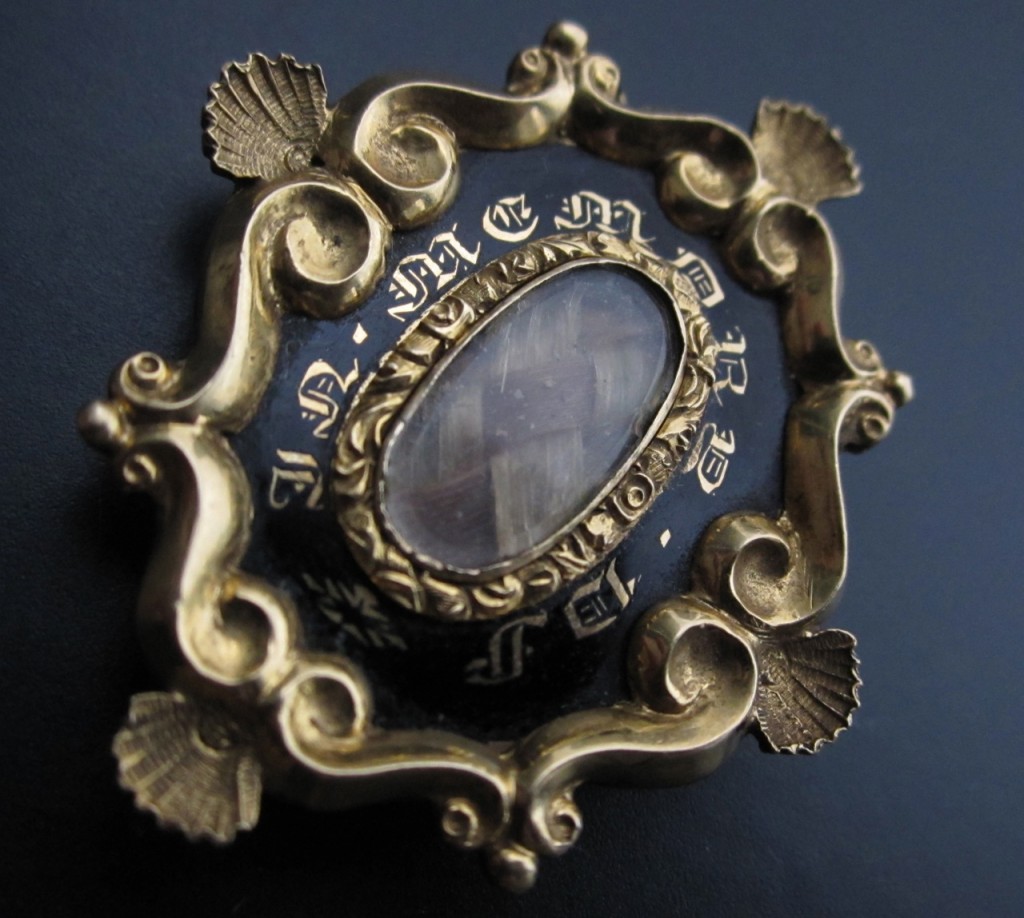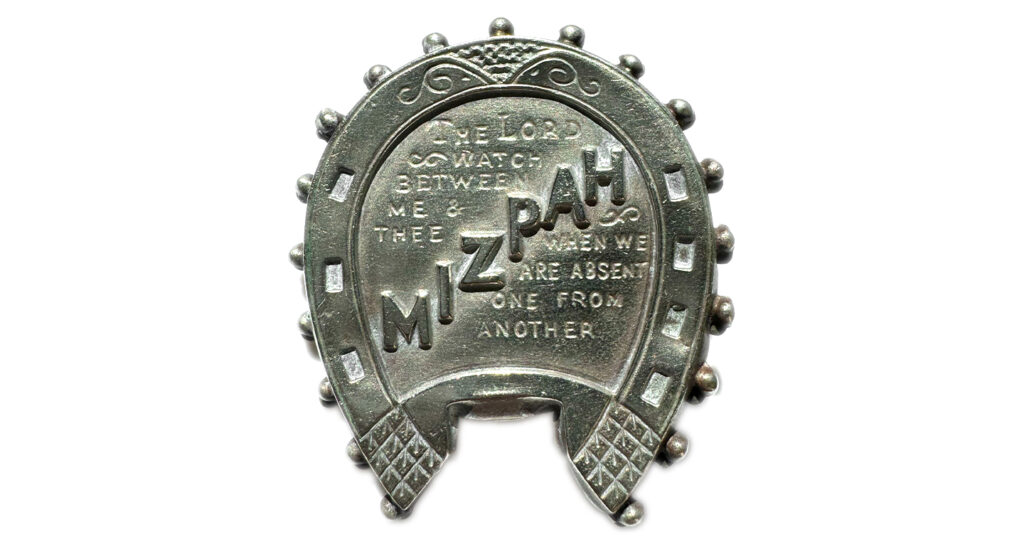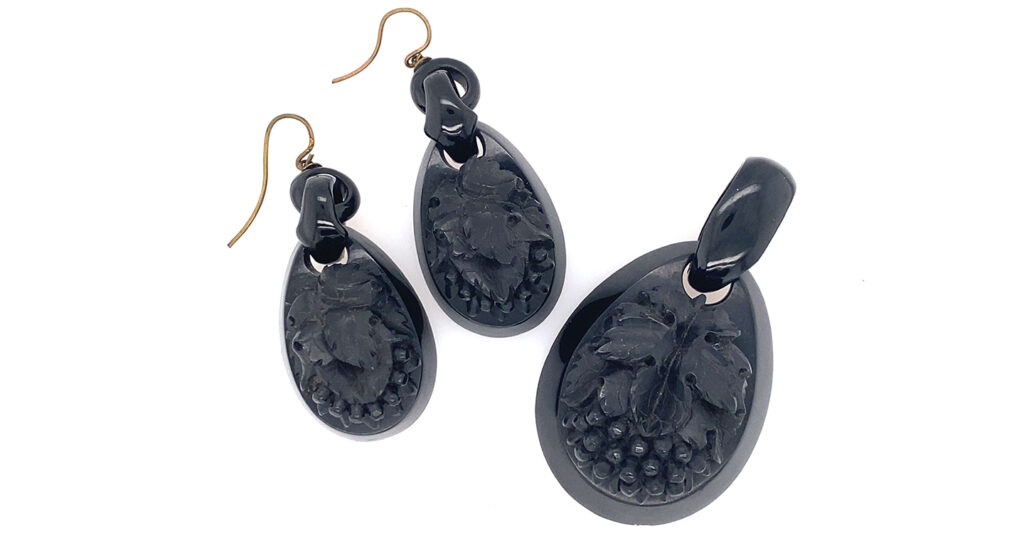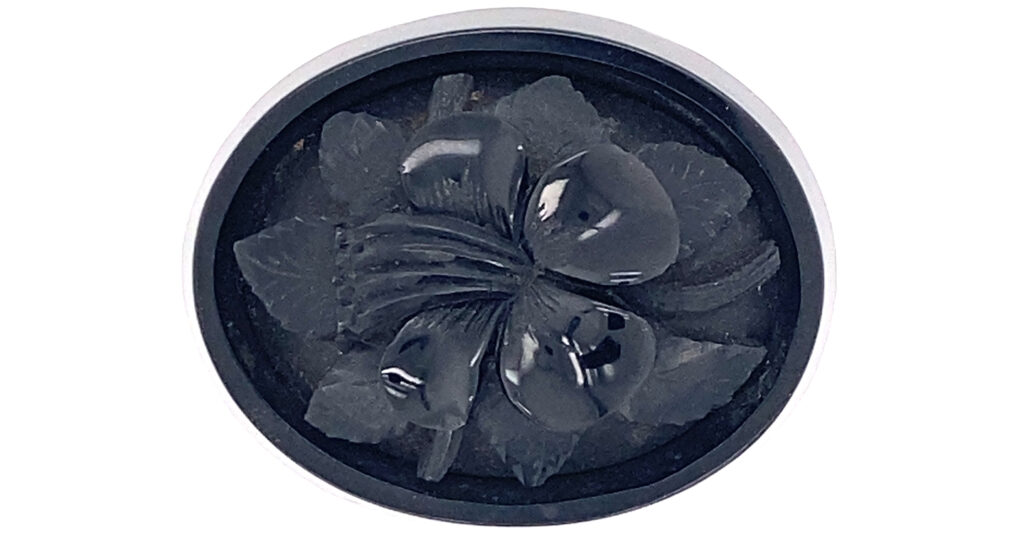Pilgrimage in a Shell: a mourning brooch

This mourning brooch struck me immediately as curious. Most Art of Mourning readers will be very familiar with the general In Memory Of black enamel brooches with central hair locket, so overwhelmingly popular in 19th Century England. However, this one is a little different.
I was drawn to the shell motif, a design that I had not seen before in this context. The combination of styles is also intriguing – the Gothic script and the chased gold of the inner border around the hair are fairly typically early – mid 19th century, however the ornate outer border with its highly stylised scrolled edges and prominent shell motifs at each point is much more High Victorian. Based on style alone I would suggest it is quite an interesting transitional piece – you, the reader, might have other opinions and feel free to comment.
However, as you may have guessed from previous posts, my imagination is stirred by the stories things can tell, and to me, the story of this piece lies in the wonderfully curious shell motif.
If you were brought up in the Catholic tradition you would have some inkling of the scallop shell associated with baptism. Indeed, many baptismal fonts are in the shape of a shell or have shell motifs. Often the water vessel the priest will use to baptise the catechumen will be in the shape of a shell, if not traditionally a shell itself.

If you have been to northern Spain you also might recognize the scallop shell motif from your travels. The shell appears in buildings and on paths that lead travelers along the Camino de Santiago – or, The Way of St James. This is a famous pilgrimage, most popular in the Middle Ages, but still travelled today, that leads pilgrims of the Christian Church to the shrine of St James at the Cathedral in the northern Spanish town of Santiago de Compostela.
The scallop shell is an attribute of St James. It acts as a practical symbol for pilgrims – identifying them and thereby giving them some protection and support from locals and fellow travellers. The scallop shell itself was often used by pilgrims as a vessel to drink water. Furthermore, the shell is seen as a metaphor, the ridges representing the separate routes from around the world from which the pilgrims come, all joining at the one point – the Cathedral of Santiago de Compostela.
What we have in the mourning brooch is not merely a design element. The decision to use the scallop shell would have been made with full knowledge of the importance of the symbol in Christianity, indeed the Camino de Santiago would have been one of the most famous pilgrimages in the Christian world when this brooch was made, and even for hundreds of years prior.
There is also the direct reference to St James, a disciple of Jesus and one of the witnesses of the Transfiguration of Jesus in the New Testament. I would imagine that a religious person in Queen Victoria’s England would be well versed in the New Testament, and this story; knowing also that the Transfiguration is considered to be one of the great miracles. It is said to show Jesus in magnificent glor as the Son of God, and to follow him is the path that leads to Heaven.
In context of mourning, this would give further weight to the metaphor of the pilgrim’s journey, as it represents the journey of the soul towards Christianity, and to its final destination to meet their maker.
It also gives me a little further insight into the potency of these jewels, the subtext of simple designs. And allows me to imagine the owner: devout, religious, grieving, believing in a better place for their loved one and hoping to meet them there one day.
‘Give me the scallop-shell quiet,
My staff of faith to walk upon,
My Scrip of joy, immortal diet,
My bottle of salvation
My gown of glory, hope’s true gage,
And thus I’ll take my pilgrimage.’
– 1604, Sir Walter Raleigh, The Passionate Man’s Pilgrimage
A post by Marielle Soni
Museum of Love and Mortality







